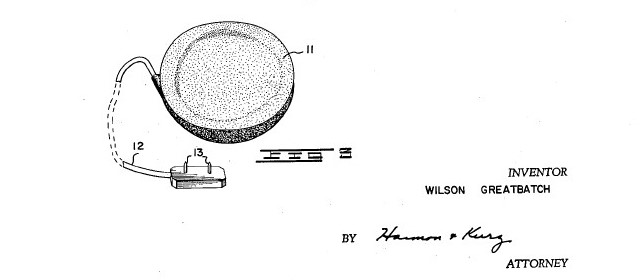21/10/2019
What are electroceuticals?
Electroceuticals are therapeutic agents that help to heal the body with minute pulses of electricity. Treating the human body with electricity has a chequered history, but the understanding that the nervous system can be stimulated by electricity impulses is attributed to the experiments of Galvani in the late 18th century.
To use a common analogy, the nervous system can be thought of like a computer terminal and wired connections that control various connected hardware components. Electrical signals carry messages from the computer terminal to the hardware components that instruct the component to perform a particular function.
In the same way that the computer’s electrical signals may get corrupted or interrupted (leading to – in the author’s experience – much slapping of equipment and vented frustration), the body’s electrical signals may also become faulty. The consequences for the body, however, are more severe than for the computer, and the faulty signals can be the trigger for numerous medical conditions or diseases.
Electroceuticals attempt to combat this by “hacking” the human body in order to regulate the natural electric impulses, thereby helping the body to heal itself. The electroceuticals would be implanted into the body and control the electrical impulses in a particular nerve to affect how an organ functions.
If this sounds familiar, a pacemaker works in essentially the same way. Electrical signals override the natural electrical signals generated by the sinus node in the heart to alter and control the timing of each heartbeat.

The first pacemaker was patented in the United States in 1962 – US3,057,356
The same principle can, theoretically, be applied throughout the body to restore the correct functioning of any cell or organ by regulating the specific neural impulses.
Typically, electroceuticals target the neural circuits of organs and – it is hoped – will be able to treat such wide ranging illnesses and diseases as diabetes, asthma and rheumatoid arthritis. For example, diabetes could be treated by electrically stimulating cells in the pancreas to produce more insulin.
How could electroceuticals transform our lives?
At present, illness and disease can be cured using drugs, radiotherapy or surgery. However, these medical techniques can be ineffective and may even cause detrimental side effects because it is extremely difficult to restrict their influence to a specific location of the body.
For example, drugs flood the blood stream in the hope that the drug arrives and interacts at the location where it is needed. However, this is by no means guaranteed and the drug will also very likely be delivered to other organs along the way.
By contrast, electroceuticals can deliver a very precise therapeutic intervention on targeted nerve fibre networks and nerve bundles. For example, recent studies[1] have shown that electroceuticals implanted onto the vagus nerve can significantly reduce inflammation in humans, leading to a reduction in the symptoms of Crohn’s disease and rheumatoid arthritis. Neither of these diseases is currently curable, and so patients rely on drugs for symptomatic relief.
Alongside an increase in the effectiveness of treatment, the number of side effects is reduced since the therapeutic action is extremely localised and does not affect other regions of the body. Further, the amount of intervention delivered by the electroceutical can be controlled non-invasively from outside the body to adjust the amount of therapeutic action throughout the course of treatment.
Accordingly, the future of medicine may be as simple as implanting a single device to combat a disease and could completely stop patients from taking lengthy regimens of drugs for symptomatic relief.
The potential for electroceuticals to treat – amongst other things – symptoms relating to chronic pain have resulted in predictions[2] that the market size will reach US$38.13 billion by 2026.
Saying this, there remain several key problems that remain to be solved before electroceuticals become a mainstay of everyday life – not least developing miniaturised devices for implanting into the body that will last for a considerable amount of time.
How we can help
Patent protection remains a key facet to developing a viable product and bringing it to market. If you would like more information regarding patenting medical devices, please contact a member of our dedicated medical device team. They have a diverse blend of experience, inter-disciplinary skills and knowledge and are on hand to guide you through the intricacies of the patent process.
This article is for general information only. Its content is not a statement of the law on any subject and does not constitute advice. Please contact Reddie & Grose LLP for advice before taking any action in reliance on it.
[1] https://www.ncbi.nlm.nih.gov/pubmed/27382171
[2] https://www.globenewswire.com/news-release/2019/05/28/1853585/0/en/Electroceuticals-Bioelectric-Medicine-Market-To-Reach-USD-38-13-Billion-By-2026-Reports-And-Data.html


